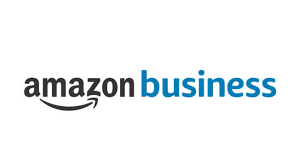Amazon Business gives more control to brands targeting B2B customers

Are you selling your products to B2B customers, via Amazon Business?
If not, you could be missing out on a huge opportunity.
Amazon Business, established for nine years, is a rapidly growing part of the eCommerce giant, with typically larger purchase values and greater ROAS (return on ad spend) for advertisers.
It was launched in 2015 in response to ordinary Amazon users buying office supplies and other business equipment in bulk through the site.
With the familiar user-friendly interface of regular Amazon, specific B2B-friendly tools to make accounting easier for the buyer, and now new controls to help you target your advertising to B2B shoppers, now is a great time for any B2B retailer to get involved.
What is Amazon Business?
Amazon Business is a division aimed at B2B buyers and sellers. It’s on the same platform as regular Amazon, but shoppers access it through a separate Amazon Business account, and there’s a Business Prime platform to get fast free delivery. Amazon says it’s home to “hundreds of thousands” of sellers, and achieved $35 billion in sales in 2023.
The approach is to be flexible and supportive of businesses of all sizes. “We are so much more than a B2B store or a procurement organisation,” says Aster Angagaw, vice president and head of commercial, public, and strategic sector at Amazon Business. “We continuously develop scalable solutions by customer size and industry vertical. We work with our customers to solve their biggest procurement challenges by giving them incredible technology such as Amazon Business analytics and Guided Buying, available with eligible Business Prime memberships.”
Amazon promotes the ability for users to filter their search to only shop from certain businesses, such as sustainable or diverse suppliers.
Amazon Business Director Todd Heimes says: “Amazon Business lets our customers use a set of policies or rules to ensure that certain types of products they buy meet those requirements.
“So, you could say, ‘I want to buy local,’ ‘I want to buy products with sustainability certifications,’ ‘I want to buy from veteran-owned or diverse suppliers.’”
What are the benefits of using Amazon Business?
Alongside its similarities to the B2C site, Amazon Business has a few handy B2B-specific tools.
It actively helps shoppers with their accounting: with one business account, multiple users can buy what they need, with built-in features to control team members’ spending. You can opt to pay by invoice, and all purchases are stored as a downloadable VAT invoice.
There are also price benefits: Amazon reckons an average 5% discount applies across single-unit items bought on Amazon Business, with further quantity discounts for bulk purchases.
There are plenty of benefits for sellers, too. Amazon claims over six million buyers worldwide, and these are serious customers: Amazon B2B buyers are three times more likely to buy an item after viewing its product page than B2C buyers, and advertisers see a 2-3x higher ROAS on Amazon Business relative to their overall Sponsored Products campaign performance.
There are more bulk purchases on Amazon Business, so you benefit from more revenue per transaction.
Lots of B2B standards apply: You get automatic invoice generation for free, you’re able to display VAT-exclusive prices, you can offer tiered quantity discounts, and you can allow customers to contact you for a quote on a specific quantity.
You also benefit from Fulfilment by Amazon (FBA), as on regular Amazon.
And, if you’re already selling on Amazon, there is no extra fee to sell on Amazon Business as well.
What’s advertising on Amazon Business like?
Advertising on Amazon Business is pretty similar to regular Amazon, with Sponsored Products, Sponsored Brands and Display ads all available: if you’re already using Amazon Ads, you’ll feel right at home.
Your Sponsored Products campaigns are eligible to appear on both Amazon.com and Amazon Business. And, up till now, there weren’t really any controls to differentiate your Amazon Business campaigns.
Nor were there separate reports: all your campaign performance data was aggregated across .com and Business, so you couldn’t see the distinct shopping experience of each.
So what are the new tools Amazon is offering?
Amazon Business has just announced exclusive bid adjustment for Sponsored Products.
This means advertisers can boost their bids by up to 900% on Amazon Business only, with no effect on their other placements, allowing them to exclusively target business customers.
It’s similar to how advertisers adjust bids for Top of Search, Product Pages, and Rest of Search in the Placement Bid Adjustment (PBA) card.
It has also announced new reporting just for Amazon Business, so advertisers can see Sponsored Product campaign data for their B2B customers’ shopping journey, providing “a powerful feedback loop to inform bid adjustment strategies for Amazon Business ads”.
This will be a single line item on the Placement report, summarising performance
across all Amazon Business placements.
‘Should you be on Amazon Business?’
Jérôme de Guigné, Founder and CEO of e-Comas, says: “It makes sense that Amazon is keen to be involved in B2B selling: it’s a huge market; individual items are usually higher-value than B2C; and customers are already familiar with how Amazon works and welcome the ease of use.
“We find that more companies, large and small, are using Amazon Business to buy the things they need for their offices and warehouses - from pens and stationery to packaging and signage. Lots of our clients are selling these kinds of items and would benefit from the bulk purchasing and tiered pricing that Amazon Business offers.
“With better advertising options and more granular reporting, we’re very excited to see how far our clients can go with Amazon Business.”